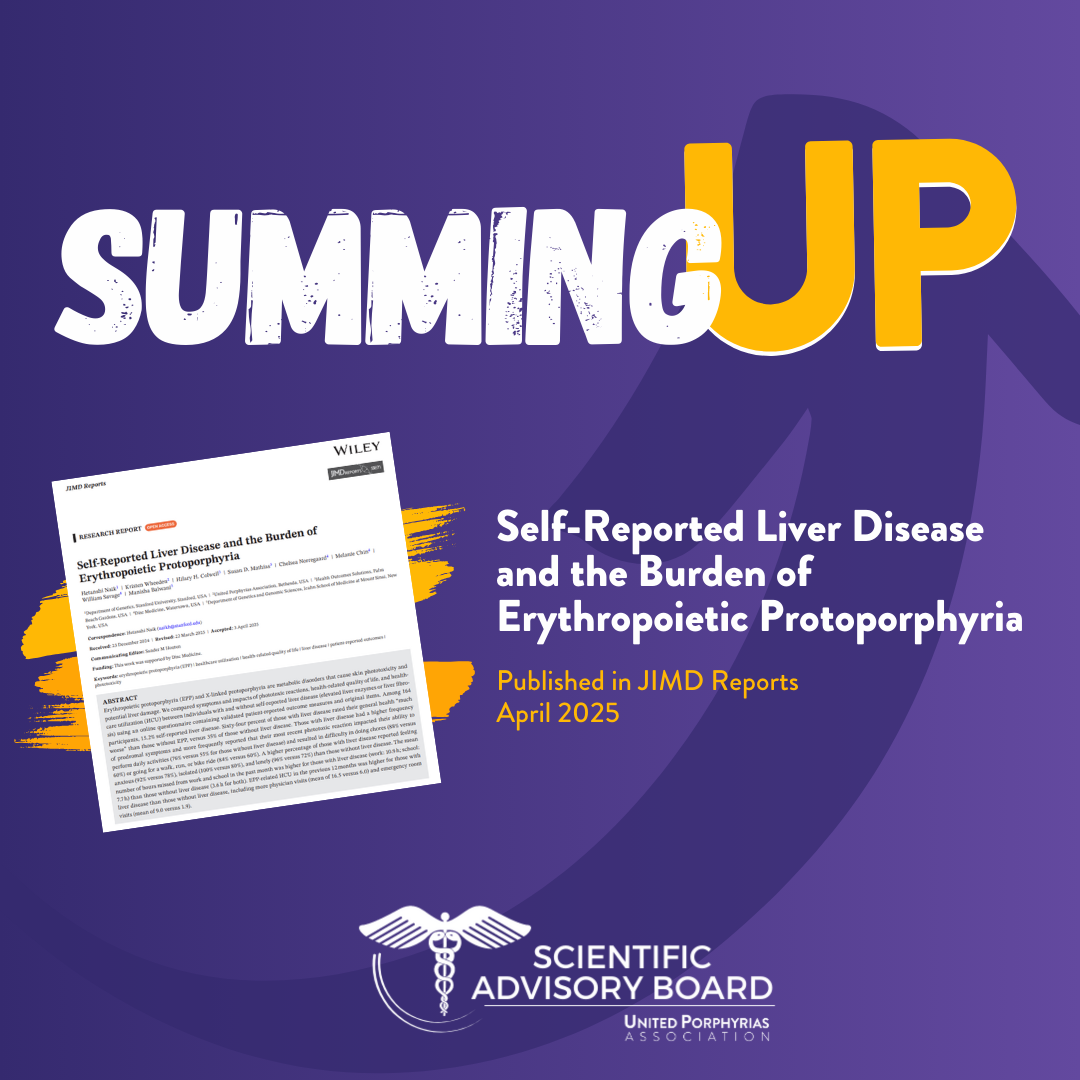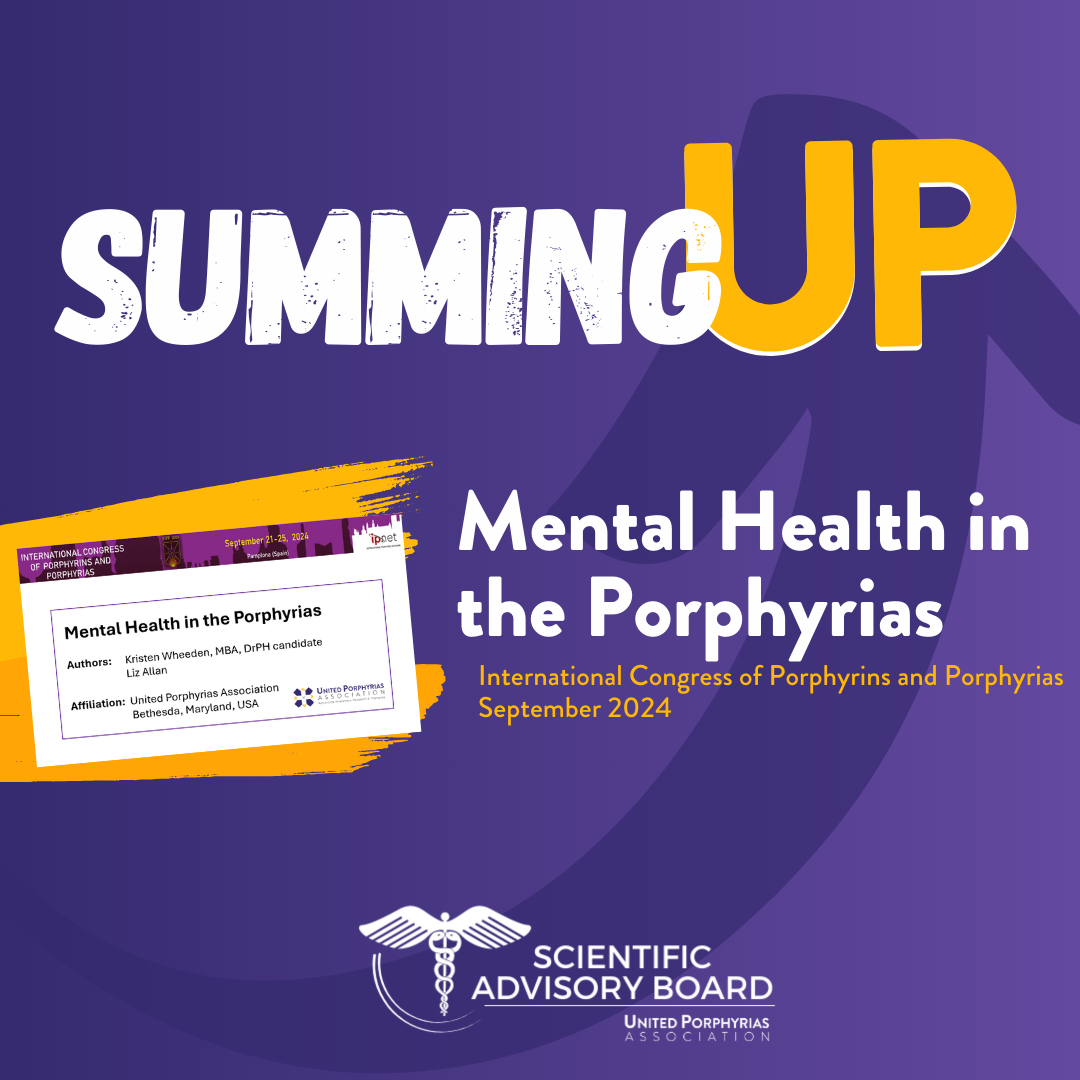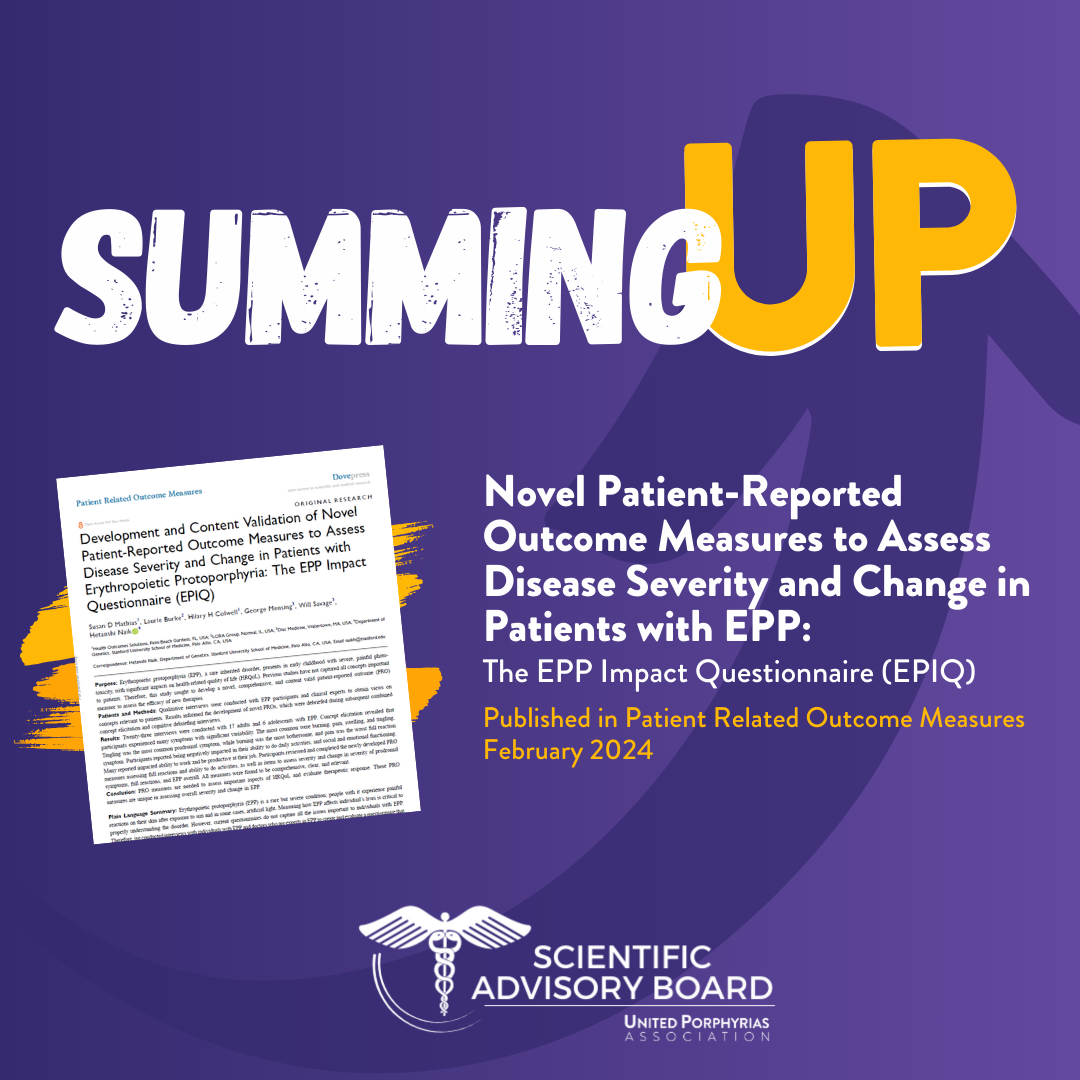Living with EPP and Liver Disease: What We Learned from Patients
Summing UP features the latest porphyria research in easy-to-understand summaries that have been reviewed and approved by the UPA's Scientific Advisory Board of porphyria experts.
Self-Reported Liver Disease and the Burden of Erythropoietic Protoporphyria
Published in JIMD Reports
April 2025
This study looked at the impact of liver disease on people with EPP by comparing the experiences of EPP patients with and without liver disease. Using responses from a questionnaire, the researchers compared the symptoms and impacts of phototoxic reactions, health-related quality of life, and healthcare utilization (HCU) between individuals with and without self-reported liver disease.
What is EPP?
Erythropoietic Protoporphyria (EPP) is a rare condition that causes extreme sensitivity to sunlight. People with EPP can experience reactions of intense pain and burning on their skin when they are in the sun - even for a short time. They can also have swelling and other skin issues after sun exposure. In some cases, EPP can also lead to liver problems.
Why This Study Matters
Doctors and researchers wanted to better understand how having both EPP and liver disease affects people’s lives. They asked adults living with EPP in the U.S. and Canada to fill out an online survey. This included questions about health, daily activities, emotions, and how often they go to the doctor or hospital.
Who Participated?
164 adults with EPP filled out the study survey.
About 15% said they had liver disease (like high liver enzymes or scarring on the liver [fibrosis]).
Most were women, White, and not Hispanic.
The average age was in the mid-40s.
What Did We Learn?
1. Living with EPP is hard—but even harder with liver disease
People with both EPP and liver disease:
Were more likely to say their health was “much worse” than others.
Had more trouble doing everyday tasks like chores or taking a walk.
Felt more emotional strain, reporting higher levels of anxiety, loneliness, and isolation.
2. Symptoms started quickly
About half of all participants felt early symptoms (like tingling or warmth) within 10 minutes of being in the sun. Those with liver disease felt some symptoms more frequently.
3. More missed work and school
People with liver disease:
Missed nearly 11 hours of work on average in a month compared to just ~4 hours for those without.
Had more ER visits and doctor appointments, many reporting up to 16 doctor visits and 9 ER trips in a year, compared to 6 and 2 for those without liver disease.
4. Mental health struggles were common
All of the people with liver disease said they felt isolated or frustrated, and nearly all felt anxious or lonely. These emotions can add to the stress of living with EPP.
What Can Be Done?
This study shows how important it is to monitor liver health in people with EPP. It also highlights the need for emotional and mental health support, especially for those dealing with additional complications like liver disease.
If you live with EPP, know that you’re not alone. This research is part of a larger effort to understand your experiences and push for better care, support, and treatment options.
CONTENT REVIEWED BY UNITED PORPHYRIAS ASSOCIATION SCIENTIFIC ADVISORY BOARD






